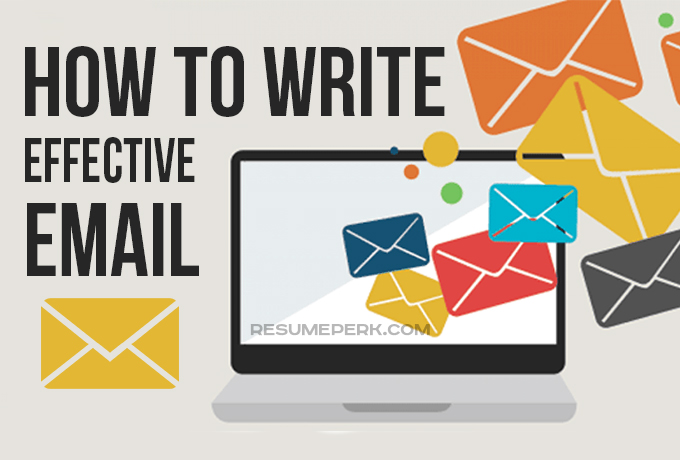How To Write Effective Email That Get Opened

Business communications of today’s world cannot be imagined without e-mail correspondence. Although social media keep taking over, e-mail messaging is still important and e-mail etiquette is seen as a sign of professionalism of the sender.
Whether you write e-mail listing on behalf of the company, promote your own product/service, or try to connect with important players in your industry for whatever reason, you have one goal in mind. You want your email to be read. And then – depending on the nature of your letter – reply back or follow the link attached.
Today we’re going to share valuable advice on how to get your e-mail opened and make it interesting for the reader. (Some of them are applicable for all kinds of white papers, including resumes and covering letters).
Step 1. How to get your e-mail opened?
If people don’t open your emails, it doesn’t matter how much blood, sweat and tears you’ve put in writing a witty yet informative text. The problem is very often with headings.There's a list of subject lines you should never use to avoid looking dull, shallow and spammy:
- Hi (Hello, Good afternoon, etc.)
- Please read this
- Can I take you out for a lunch?
- Find a free gift for you inside
- Urgent!
The problem with the above headings is that they aren’t informative. They don’t give a clue to a reader who you are and why they should open an email from you. Here are a few tips on how you should approach creating catchy headlines:
- Be meaningful. Let the reader know what your email is about – this is what headings exist for, aren’t they? In a plenty of words, outline the purpose of your message (and maybe, the benefits of reading it).
- Use the power of words. Strong emotional words capture the attention and differentiate your email from the bunch of others in their mailbox.
- Use numbers. Numbers stop wandering eyes on the screen. From the list of e-mails, a person will rather click the one that contains digits.
- Say it in simple words. Sophisticated, smart terminology kills the interest and might make the readers think they’re not smart enough. E-mail heading isn’t the best place to show off your rich vocabulary.
- Make them curious. Ask an interesting questions or intrigue in some other way. Sometimes people open emails from unknown senders just because they were curious about the headline.
- Promise something helpful. If you know for sure that the information in your email can help the reader resolve their problems or help them in business, relationship, etc., don’t be shy to state it in your heading.
- Make it smartphone-friendly. The smartphone screen allows seeing only 4 to 7 words in the subject line. Since the number of people checking their email on the go is growing, stick to this length of heading to make sure the whole of it is displayed.
Step 2. How to make your e-mail reader-friendly and engaging?
Writing an e-mail is no big deal. Writing an e-mail that is read in one shot and keeps the reader wanting for more (meeting you in person, learning more about your project/company, etc.) is a kind of art. You can improve the quality of your e-mail writing by using the following:
- Write as if you were taking to a friend
Business letters often sound robotic and dull. The best way to liven them up is to write as if you were speaking to a close friend of yours. What will happen? Your email tone will become more personal. Thus, the chances of your email getting read from the top to the bottom will increase. - Write only if you have something to say
Send e-mails only if you have something valuable or helpful to share with your audience or one reader. Before sending your email, read the text of the message and ask yourself, “So what?” If you cannot think of how the information is helpful to the reader, delete the letter and wait for the time you have something to say. - Use your name in your ‘from’ address
It helps you sound more personal and puts your reputation at stake. It highlight you’re a real person rather that a faceless company’s representative. As a result, you sound more trustworthy to a potential reader. - Give a reward for reading an email
Depending on the content and type of your email it can be a free tip, how-to guide or a discount for your services or the products you sell. The reader should feel inspired after reading your email. Give them someone that will make them feel better. - Get to the point quickly
Even if you don’t know the person, don’t be over explaining. Say “Hello” and write about what you wanted to say – quickly and shortly. Avoid sending long letters, unless it’s critical. Try to be as short and informative as possible, especially if you write for busy superiors or someone popular in your industry. - Ask questions to get the reader more involved
When we talk to a friend face to face, we often ask questions during the conversation. Use this method when writing an e-mail to engage the reader and make the tone of your letter more friendly and informal. - Structure your e-mail to make it easier to read
Many still write e-mails in the form of plain blocks of text which are rarely broke into paragraphs. Use shorter sentences, short paragraphs and use lists with bullet points when it’s possible. Try to organize and simplify the content of your message to make it easier for the person to skim through it. - Limit the use of humor
If you write to someone you’ve never met in person, try to avoid jokes. They rarely transfer well due to the reason that you can’t use your voice tone and body language and the things you write may be misunderstood. As you goal is to set the positive connection with a person, avoid misunderstanding and avoid jokes. - Proofread it carefully
Proper grammar and spelling matters in all means of written communication, and email is not the exception. Double check it for typos, punctuation mistakes and grammar errors prior to sending. Don’t forget that proper grammar also contributes to your professional image. - Give a complete information to the reader
You’re writing an email for the purpose, right? So, make sure that your purpose is pretty clear for the reader. Your message should contain full information on the matter and it shouldn’t confuse the reader and make them ask for clarifications from you. - Include an e-mail signature
Don’t forget to conclude your e-mail with a signature containing your name, e-mail, company website or other relevant details. The reader, especially if they are very busy, won’t spend time searching for contact details to get back to you. Save their time and provide all necessary contact information in one place.
If you think your writing skills need improvement, check the content writing tips for newbies. The principles of effective content writing are quite similar to e-mail writing so you’ll be able to make your writing more persuasive.
Need professional help with writing white papers such as resume, cover letter, etc.? Our company has been offering resume help for 9 years and we are glad to assist professionals from all career backgrounds. Get in touch with us for more information!
Recommended reading:
- How To Start Cover Letter To Make It Eye-Catching
- 12 Common Cover Letter Don'ts Everyone Should Know
- 3 Types of Cover Letters & When to Use Each
- How To Write An Email To Get A Job ? ResumePerk
- Relocation Cover Letter: Tips from Cover Letter Proofreader
- How To Write A Powerful Relocation Cover Letter - BEST TIPS!
- Cover Letter For Manager Position: Examples & Tips | ResumePerk
- Cover Letter For Research Assistant: Example | ResumePerk
- What To Write In An Email When Sending A Resume? | ResumePerk
- Cover Letter For Sales Representative Examples | ResumePerk


